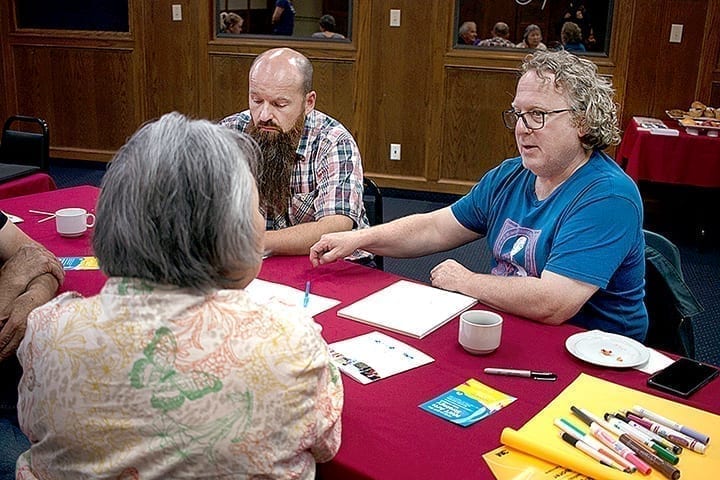Artists from all walks of life had the chance to weigh in on the GNWT’s new arts strategy during a meeting in Hay River over the weekend.
For the past month, the department of Industry, Tourism and Investment (ITI) has been travelling to communities across the territory to conduct roundtable discussions about the new strategy.
“All ideas are basically out there on the table,” said Johanna Tiemessen, ITI's manager or arts and crafts programming and economic diversification.

“The engagement sessions that we're conducting are an open space model. Which means that people that attend are given the opportunity to champion a cause in the arts. Whether it’s artists, or retailers or volunteers. Anything that you can think of from an arts standpoint.”
A total of eight people showed up to give their input on the strategy on Sunday night, including Peter Magill.
“I wanted to talk about how we change or grow or maintain the artist community, particularly in Hay River but also in the Northwest Territories in general,” Magill told The Hub.
Magill, who has been on the board of Hay Days for the past few years, said he showed up to suggest creating more spaces for artists to ply their trade.
“Right now, most people are working from their homes,” he said.
He added that he would like to see the government become more engaged with artists in helping them access funding that is already available to them.
“Most artists are very busy making art and this can be a very intimidating process,” he said.
The GNWT's arts strategy is a joint initiative between the department of Education, Culture and Employment (ECE) and ITI. It was first implemented in 2004, with a view to addressing issues and opportunities in the sector.
During the 18th Legislative Assembly, the territorial government pledged to update the strategy to better serve the artists and the industry.
“Our current arts strategy didn't encompass current technology, new ways of making art, new ways of applying traditional techniques to new arts and even new things like fashion,” said Tiemessen.
“It was identified that it should go under review so that our artists can compete in the national and international marketplace.”
That is one of the reasons Barb Low came to the meeting. Low grew up in Aklavik, where all her clothing was homemade by her mother and grandmother.
She has been sewing and selling traditional clothing herself for the past 25 years. However, she would like to be able expand into other markets.
“It's of strong interest to me because I like to feel like I'm an artisan that is carrying on my legacy,” she said.
One of the points Low raised during the meeting was the importance of communicating how much work goes into making traditional clothing.
She said that if there was a better network connecting artists throughout the territory they would be able to justify getting better paid for their work.
“There's a lot of people that don't realize how many hours are put into a product when you put a price on it,” she said.
Last December, 277 people responded an online survey about the arts strategy.
In addition to Hay River, the current delegation is visiting Fort Smith, Fort Simpson, Behchoko Norman Wells, Inuvik and Yellowknife to get feedback in person over the course of the summer.
People can go online until August 9 to add more general feedback and communicate with other artists about the chances they'd like to see.
Once this current round of public consultations is wrapped up, a report will be tabled and brought forward to the legislative assembly where the implementation of the new strategy will be rolled out.